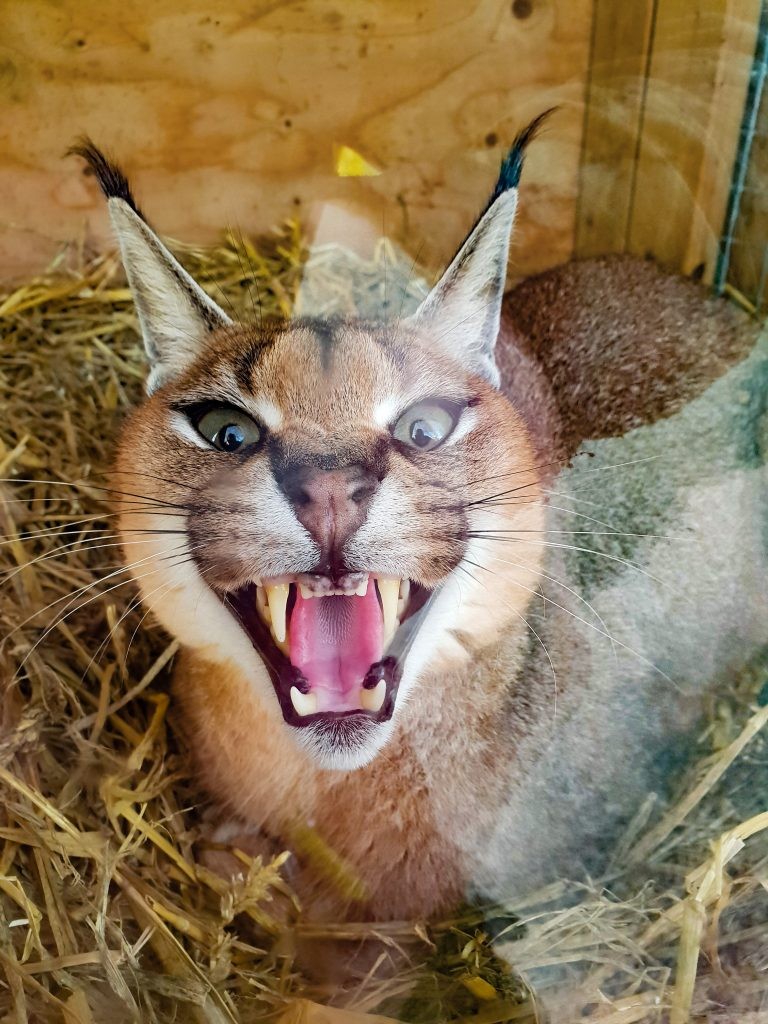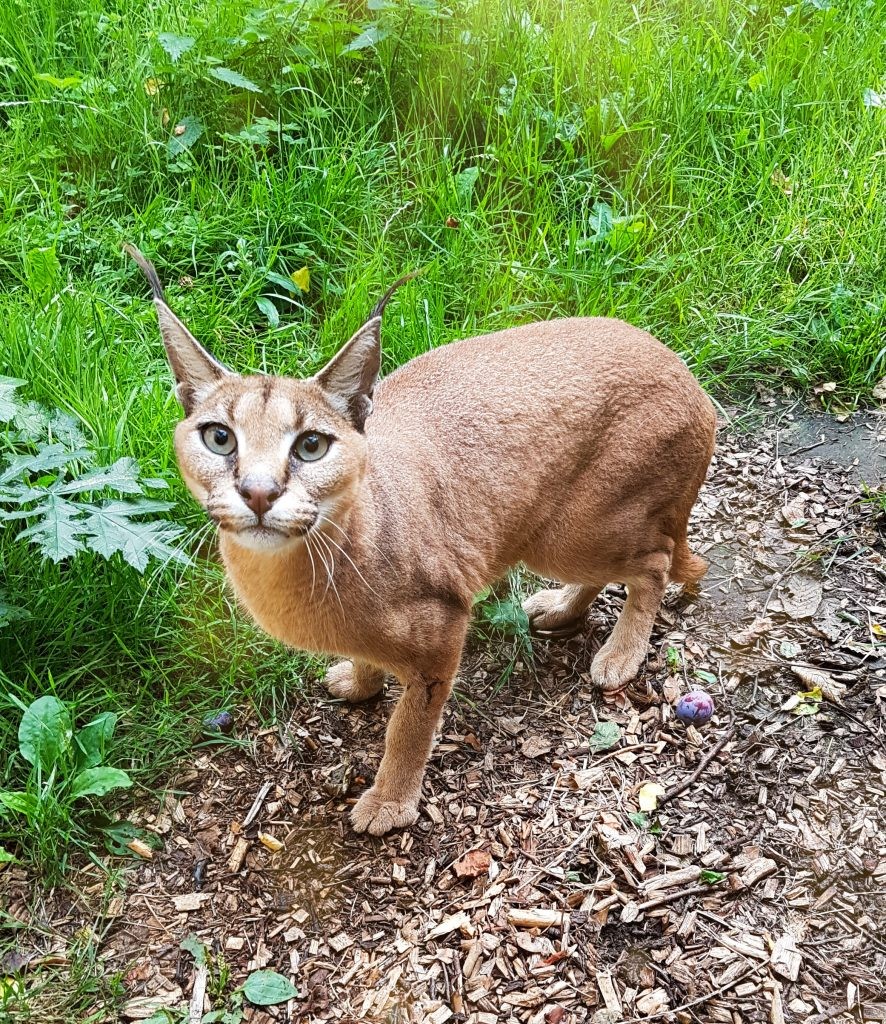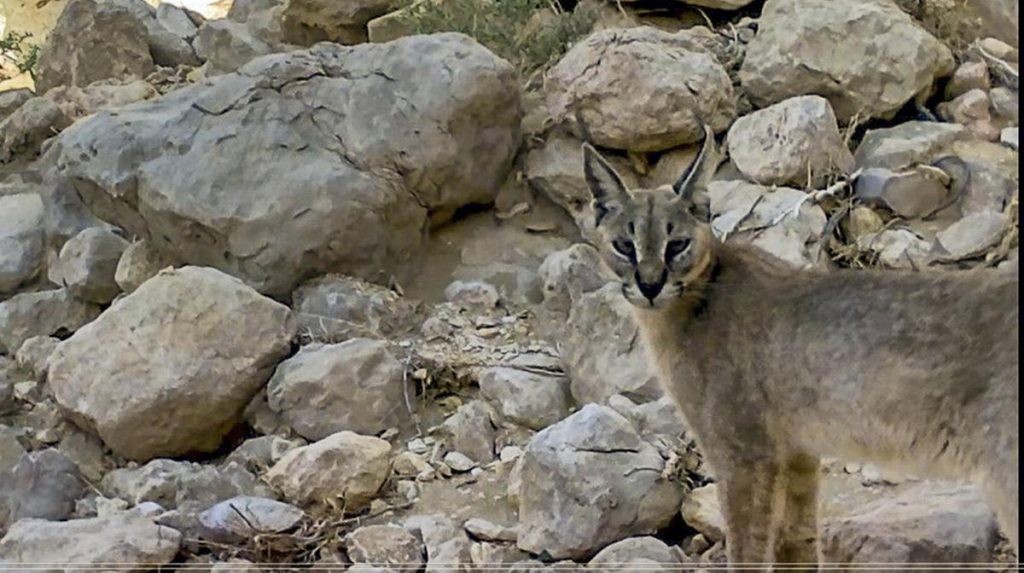At the end of February a news article about a caracal sighting in Abu Dhabi caught my eye. In the title it said that it was the first sighting in 35 years, so I had to take a look and find out more!
The Environment Agency in Abu Dhabi have a network of 45 remote camera traps dotted around the Jebel Hafeet National Park. This area is rich in flora and fauna, many of which are endangered species. Therefore, this long term monitoring program is in place in order to gain a bit more information about who and what is inhabiting the mountainous region. It was on one of these cameras that the agency documented the photo of an absolutely gorgeous male Asiatic caracal (Caracal caracal schmitzi).
Caracals are pretty rare across the Arabian Peninsula, with the last one sighted in the area in 1984. This decline is mainly due to illegal hunting and habitat loss caused by increased agricultural development.
The rediscovery of this species in Abu Dhabi will hopefully encourage the environment agency to continue the monitoring and preservation of such a biologically diverse area whilst also highlighting the real world advantages of using technology in the conservation field. The Agency says their next step is to determine a population size of caracals within the region.
What is a Caracal?
Wingham Wildlife Park is home to a caracal as well, she is called Maya, and possibly has the most beautiful pair of eyes I’ve ever seen- they are truly hypnotic.

A lot of people ask me what she is, or if she is a Lynx so I think Caracals deserve a little bit of the spotlight after the latest good news in the Arabian Peninsula.
Caracals (Caracal caracal) are a medium sized species of cat, with long legs, and a small head. Their fur is not patterned, and ranges from a sandy colour to quite red in colour, with their bellies being white. They also have large black tufted ears which may be the source of confusion with Lynx. The name caracal is thought to have derived from the Turkish word ‘Karakulak’ which means ‘black ear’!
Their diet mainly consists of small mammals, birds and rodents and they use their exceptional hearing to detect any small ground dwelling creature to hunt. Their powerful hind legs allow them to propel themselves more than 3 metres (10ft) into the air to catch birds mid flight! If you are a fan of David Attenborough you are sure to have seen footage of this magnificent animal showing off its acrobatic skills.
We are still working on Maya’s jump training which is good enrichment and great health wise to get her using those muscles and joints the way she would in the wild.
However, they also set their sights on animals much larger than themselves to feast on; young Kudu, impala and springbok being some examples. For a cat that typically weighs between 8-18 kg (18 lbs- 39 lbs), that is quite impressive!
These animals are solitary and typically nocturnal but it is thought that they are much more active in the day than we previously considered them to be; their secretive nature means that their daytime activities are quite often missed. In the case of the Arabian male, he was captured on camera both during the day and the night so he was not shy at all!
You’ll find the caracal across Africa and Asia, represented by 3 subspecies in each geographic area (North Africa, Sub-Saharan Africa and Asia). They are not listed as Endangered on the IUCN but as Least Concern. However the northern subspecies and evidently the asiatic are considered rare in some areas. They occupy a range of habitats; from forests and marshy lowlands to semi deserts and mountainous areas. The key point is though, they seem to prefer it very dry (Maya is most definitely not a fan of the rain here at the park either)!
THOSE EARS!!!!
The most distinguishing feature of the caracal are those awesome ears, and there are a few theories as to what function the tufts may have.

- Insects- it is argued that the tufts on top of the ear serve to keep flying insects away from the ears and even stop them from going down the ear canal
- Communication- when you watch two caracals approach each other there is normally a lot of ear flicking. It’s thought that those ear tufts are a vital visual communication tool that the caracals use to ‘speak’ to one another. As a solitary animal, a means of long distance communication can be quite handy in order to determine whether a new arrival is a friend or foe.
- Camouflage – particularly within tall grasses when hunting.
- Hearing- with the tufts effectively acting as an ear extension, some scientists think that they actively channel sound waves directly into the ear, enhancing their already exceptional hearing.
Caracals and Humans
Now I have already said that our Maya is an absolutely stunning animal and I am not the only one who thinks so, throughout history caracals have been worshipped and revered. Ancient Egyptians held caracals in quite a significant, hugely religious position. Embalmed caracals and statues have been found guarding the tombs of Pharaohs.
In China, the emperors (particularly the 13th and 14th century) would give caracals as gifts. They were a valuable sport animal, readily used in hunts by Indian rulers as late as the 20th century.
Sadly, like most carnivores, their numbers are declining. Habitat loss and fragmentation seem to be the main factors impacting on animals in the wild. Climate change is also thought to be playing a part, causing desertification to areas, normally in conjunction with agricultural practices as well.
Due to their ambitious hunting nature, they do readily attack livestock and therefore retaliation killings are also not uncommon. They are hunted across their range for meat and pelts, but are also regarded as vermin in some areas.
Another worrying trend the IUCN has documented is the increasing occurrence of caracals in the international exotic pet trade. This is an international problem for many species, and the IUCN states that the wild origin of the animals that have been found in the trade is still not entirely known.



